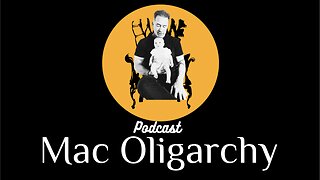Are Rising Mortgage Rates Starting Slowdown in Housing Sales/Home Building
Today's video will delve into mortgage rates and homebuilding. What does the future hold?
Where is the market headed? To a CRISIS? Meltdown?
Interest rates are a primary concern when buying a home. A low-interest rate means an affordable mortgage payment, and a high rate makes it difficult to afford or even get approved for a loan.
But how are mortgage rates determined, and what can you do to make sure you have a low rate?
Here’s an explanation of how mortgage rates are determined.
An Overview Of How Mortgage Interest Rates Are Determined
Several factors affect how mortgage rates are determined today, but you can only control one aspect: personal factors. Lenders look at your qualifying factors to determine your risk level. The better your qualifying factors, the better the interest rate they’ll offer.
But it all starts with the current market rates, so you may wonder how the market affects interest rates.
Mortgage rates are affected by the overall economy. When the economic outlook is good, rates tend to increase, and rates fall when they’re not so great. It seems somewhat backward, but here’s the reasoning.
When the economy is doing well, borrowers can afford more. Without increased rates, the demand for mortgages could exceed the bandwidth of most lenders. Slightly rising rates keep everyone on the same level.
Conversely, when the economy declines and unemployment rates increase, interest rates fall to make it more affordable for borrowers to take out loans.
Frequency Of Interest Rate Changes
Every day, banks receive rate sheets. This doesn’t mean rates change daily, but they can. In fact, they can change multiple times a day. If you have your eye on an interest rate, it’s best to talk to your lender about locking the rate in quickly before it changes.
15-Year Vs. 30-Year Mortgage Rates
If you can afford a 15-year mortgage with its higher payment, you’ll get a lower interest rate. That’s because it costs banks more money to lend money for 30 years versus 15. If they can receive their money back in half the time (15 years), they’ll reward borrowers for it with lower interest rates.
Which Market Factors Affect Mortgage Rates?
Market factors are some of the largest driving forces behind mortgage rates. The Federal Reserve, bond market, Secured Overnight Finance Rates, Constant Maturity Treasury, the health of the economy, and inflation all affect mortgage rates.
Federal Reserve
Many people assume the Federal Reserve sets mortgage rates. They don’t, but the Federal Reserve does affect rates. The Fed controls short-term interest rates by increasing them or decreasing them based on the state of the economy. While mortgage rates aren’t directly tied to the Fed rates, when the Fed rate changes, the prime rate for mortgages usually follows suit shortly afterward.
The Federal Reserve controls short-term interest rates to control the money supply. When the economy is struggling, as has been the case during COVID-19, the Fed lowers rates, which is why you’ve likely heard rates are close to 0%. These are not the rates given to consumers, but the rates at which banks can borrow money to lend to consumers.
When the Fed decides they need to tighten up the money supply, they raise the Fed rate. While this doesn’t directly increase mortgage rates, eventually, banks and lenders must follow suit to keep up with their costs to borrow money from the Fed.
Bond Market
Mortgage rates have a reputation of being tied to the 10-year Treasury note when they’re tied to the bond market.
Mortgage-backed securities, or mortgage bonds, are bundles of mortgages sold in the bond market. Bonds affect mortgage rates depending on their demand. When the demand for mortgage bonds is high (usually when the stock market performs poorly), mortgage rates increase, and when the demand is low, mortgage rates decrease.
Secured Overnight Finance Rate
Secured Overnight Finance Rate (SOFR) is an interest rate set based on the cost of overnight borrowing for banks. It’s often used by lenders to determine a mortgage’s base interest rate, depending on the type of home loan. It’s grown in popularity to serve as the replacement for the London Interbank Offer Rate (LIBOR), which is being phased out at the end of 2021.
Constant Maturity Treasury Rates
Constant Maturity Treasury rates, or CMT rates, refer to a yield that’s calculated by taking the average yield of different types of Treasury securities with varying maturity periods and using it to adjust for a number of time periods.
Inflation
Mortgage rates and inflation go hand-in-hand. When inflation increases, interest rates increase too so they can keep up with the value of the dollar. If inflation decreases, mortgage rates drop. During periods of low inflation, mortgage rates tend to stay the same or slightly fluctuate
-
 1:14:04
1:14:04
NONCONFORMING-CONFORMIST
2 months agoYOU HAVE TO PAY A LOT AND IN SO MANY WAYS TO TAKE PART IN THIS WORLD
282 -
 35:12
35:12
Island Hopper TV
1 day agoFull Costa Rica Travel Guide 2024
22.9K27 -
 4:43
4:43
ParisDemers
1 day agoThis Diet Hack Changed My Life! (How To Get Ripped FAST!)
42.8K46 -
 46:57
46:57
Crime Circus
1 day agoApple River ST*BBING!! Stand Your Ground Interrogation of Man in Wisconsin
51K45 -
 9:39
9:39
Tactical Advisor
1 day agoHow To Improve Your Shooting For FREE! Mantis Blackbeard X
63.4K13 -
 1:00:59
1:00:59
Squaring The Circle w/ Randall Carlson
1 day ago#007 The Real Climate Crisis Noone Is Talking About and Mount Tambora Pt 2
67.3K15 -
 13:52
13:52
America Uncovered
1 day agoEveryone is WRONG About Trump's Guilty Verdict
45.6K86 -
 13:10
13:10
Censored TV
1 day agoThe Owen Benjamin vs Jim Goad debate was WILD
54.4K37 -
 25:27
25:27
Degenerate Plays
19 hours agoThe Microtransaction Master - Call Of Duty Modern Warfare Remastered : Part 3
55.2K4 -
 21:03
21:03
MYLUNCHBREAK CHANNEL PAGE
22 hours agoOld World Minnesota?
61K35